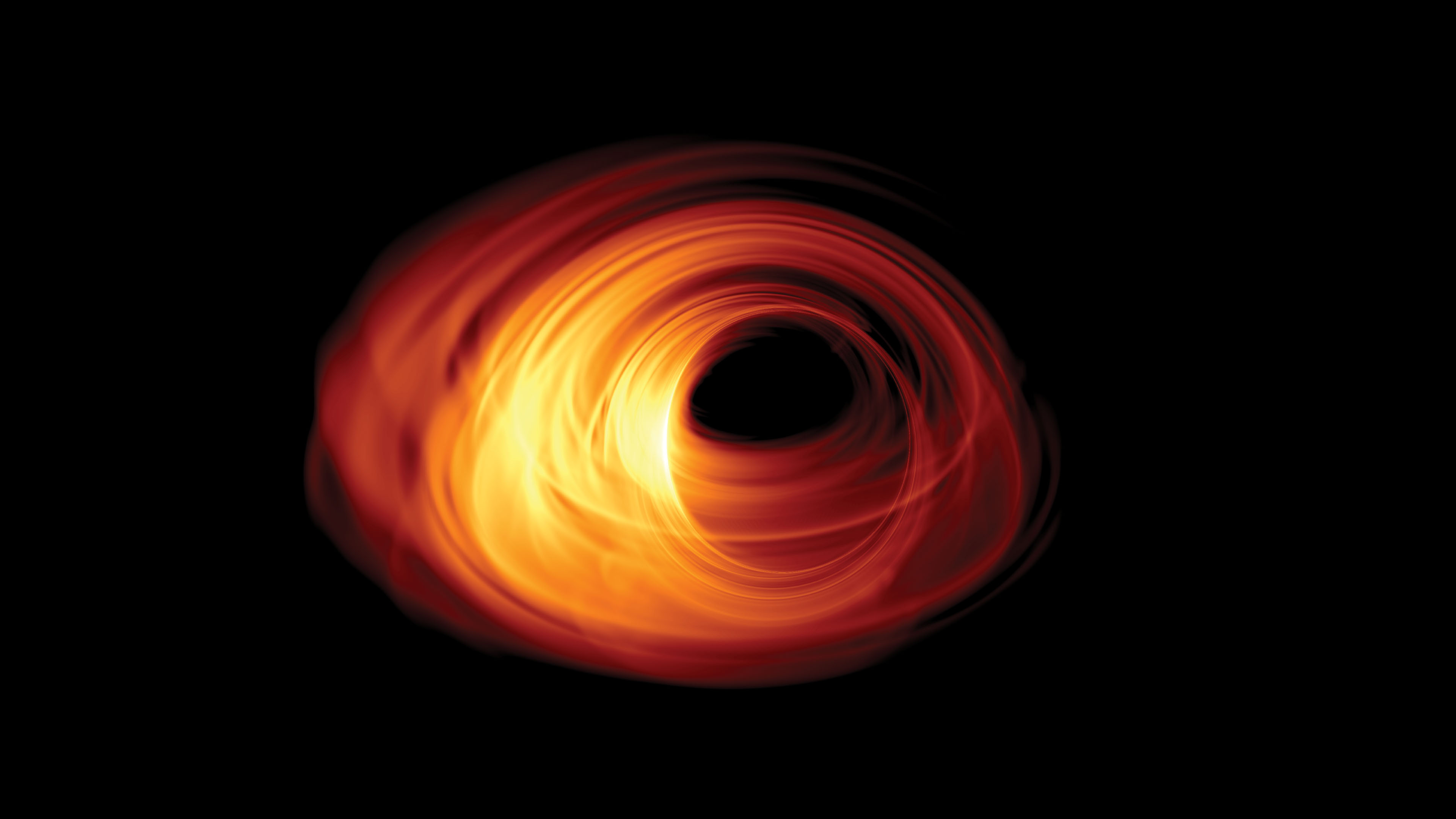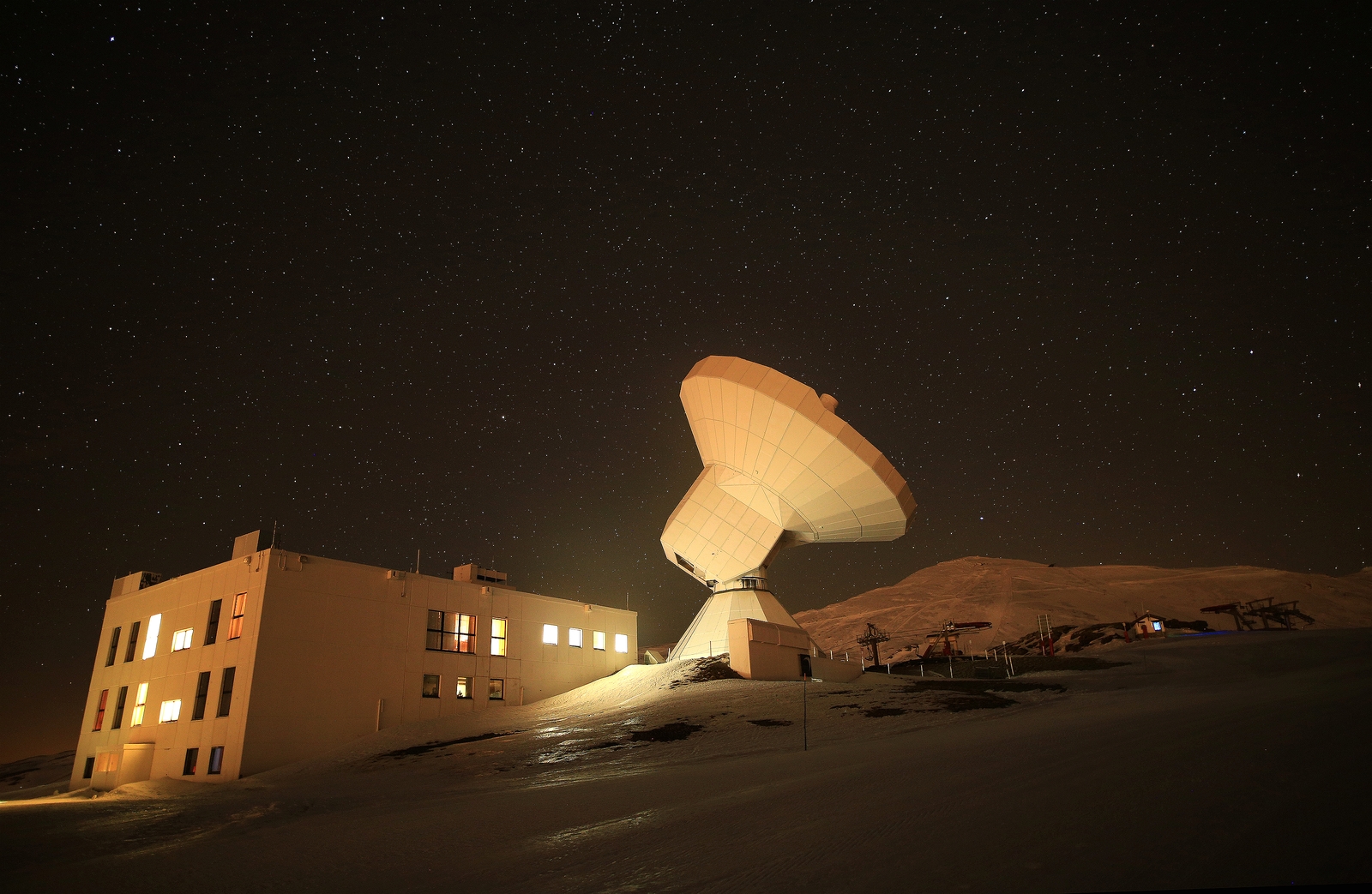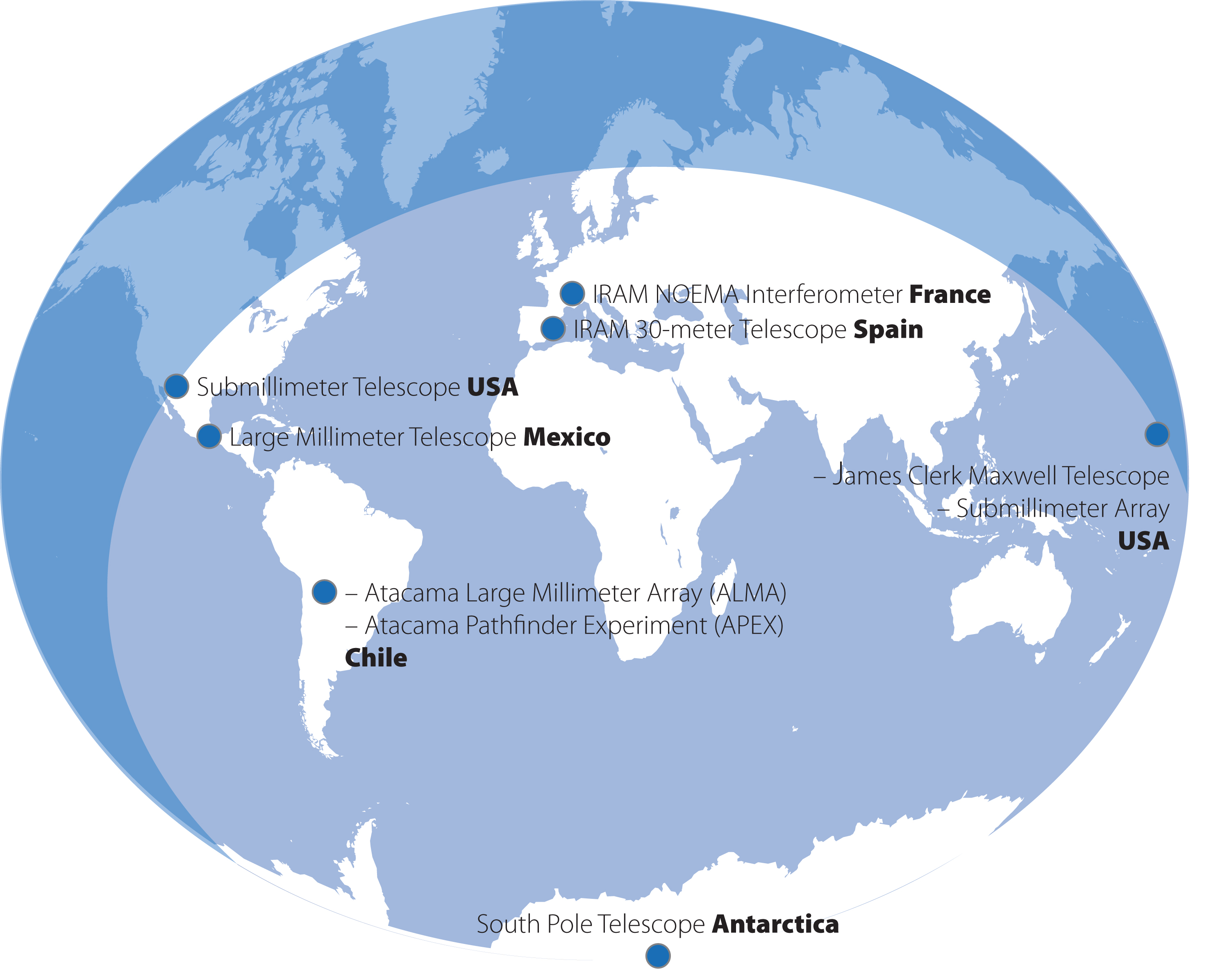News
Imaging the black hole at the center of our Galaxy
 |
| An artistic illustration of the black hole horizon at the center of our Galaxy © M. Moscibrodzka, T. Bronzwaar und H. Falcke, Radboud University |
Thanks to a world network of radio telescopes, an international team of astronomers will join in April and try for the first time in the history of astronomy, to capture an image of the center of our galaxy, where a giant black hole lies. This worldwide project is called Event Horizon Telescope (EHT); it combines telescopes across four continents from Europe to the South Pole, through Chile and Hawaii.
The IRAM 30-meter telescope is the only observatory in Europe taking part in this first April session. Thanks to its sensitivity, the IRAM 30-meter telescope is a valuable asset for the EHT project, being after ALMA in the south hemisphere, the most sensitive telescope of the current network. NOEMA, the other IRAM observatory, located on the Plateau de Bure in the French Alps, will outperform the 30-meter observatory, when entering the EHT project in 2018, thus adding to the imaging effort. Thanks to its ultra-sensitive 10 antennas, NOEMA will be the most capable station of observation of the Northern hemisphere network, searching for the mysteries of the black hole of our galaxy center.
Black holes
Black holes are fascinating objects predicted by general relativity, they have such a huge mass that even light cannot escape. They are therefore not directly observable. However, because of their immense gravitational attraction on their surroundings, the presence of these objects is indirectly established. There is another way to observe a black hole. The limit beyond which light (and obviously all matter) is trapped by the black hole is called the horizon of the black hole. At the very moment when matter crosses this boundary, the theory predicts that a final puff of light is emitted, as a final testimony before sinking into the black hole. This emission can be observed in the millimeter wavelength range. It is therefore possible to map the horizon of a black hole! The aim of the EHT project is to tackle this task and to map the black hole of about 4 million solar masses, in the very center of the Milky Way, roughly 25 thousand light years away from Earth.
A worldwide network of radio telescopes
 |
| The IRAM 30-meter telescope is one of the most sensitive telescopes of the current EHT network, © IRAM/DiVertiCimes |
Observational technologies in the millimeter regime have made considerable progress over the last decades: antennas, reception systems, electronic data processing devices, all have known key developments. Observing a black hole has become possible.
The problem remains the size of these objects which, seen from the Earth remains extremely weak. The solution is to use interferometry. The principle is the following: instead of building a giant telescope, several observatories are combined as if they were small fragments of a giant mirror. This allows us to obtain a virtual telescope of the size of the Earth, where the larger the telescope is, the finer the details it can observe (its angular resolution has improved).
The EHT project thus intends to observe in interferometric mode, at a frequency of 230 GHz, i.e a wavelength of 1.3 mm. The maximum angular resolution of the EHT is 26 micro-seconds of arc, which corresponds to the size of a golf ball on the moon, or the thickness of a hair seen at a distance of 500 km! This type of observation, called VLBI (Very Long Baseline Interferometry), comes with considerable technical challenges.
To achieve the required precision, it is necessary to use the most accurate atomic clocks presently available – at each one of the participating observatories!
IRAM
The Institut de Radioastronomie Millimétrique (IRAM) is a French, German, and Spanish institute operating two observatories – the 30-meter telescope on Pico Veleta and the NOEMA observatory. IRAM played a pioneering role in the development of VLBI techniques at millimeter wavelengths: the very first observations of this type were made by combining both IRAM facilities! Since then, IRAM has played a key role in the worldwide antennas network, bringing along two of the most sensitive observatories. Most recently, the very first VLBI observations with ALMA (the very large network of antennas in Chile) were made possible by combining the data from ALMA and those from Pico Veleta. This critical step enabled the validation of technological developments and opened the door to EHT observations.
IRAM participation in the EHT project is partly supported by the European Union, which has awarded an ERC grant to the "Black Hole Cam" project.
 |
| The Event Horizon Telescope (EHT) is the combination of nine observatories on four continents and Hawaii. The observatories, when working together, will have a resolving power of a telescope with a diameter close to the size of the Earth. © IRAM |
Further information
The Black Hole Cam Project
The Event Horizon Telescope
Contact press
Karin Zacher, IRAM press officer, zacher@iram.fr, Tel. 0033-476822103



